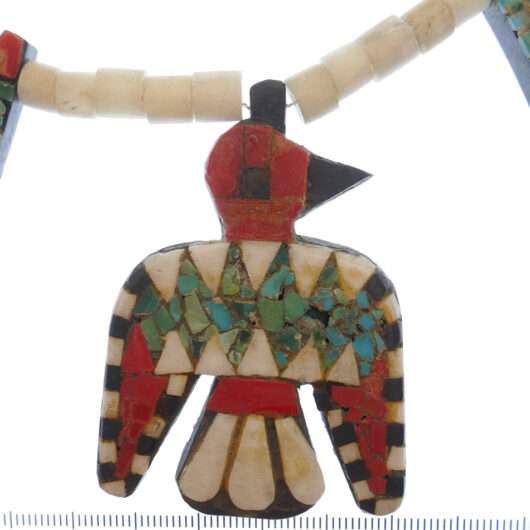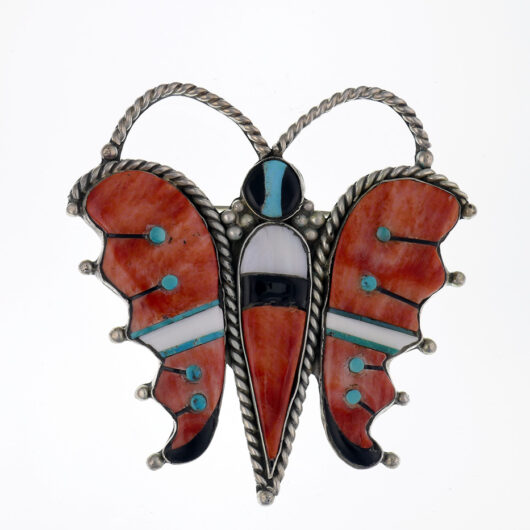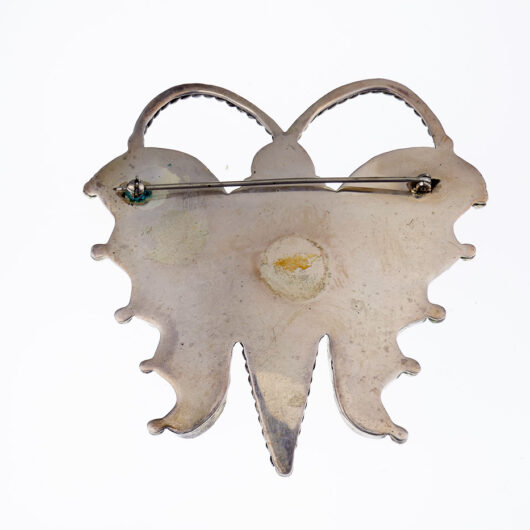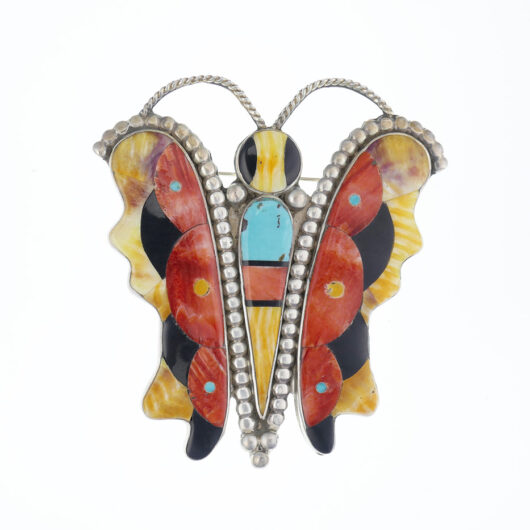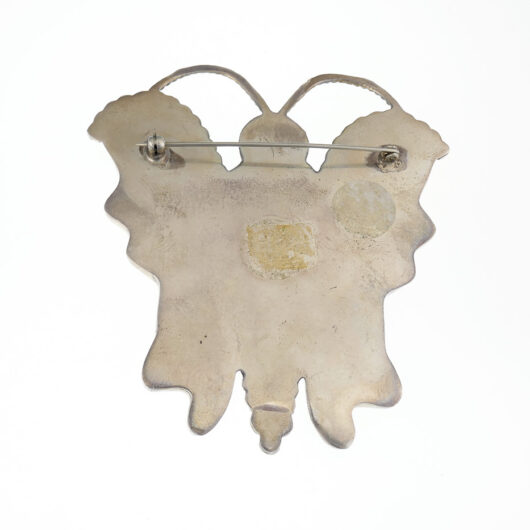- You cannot add "Inlaid Navajo Bracelet Native American Artist Ervin Tsosie" to the cart because the product is out of stock.
Vintage Bone Turquoise Santo Domingo Depression Era Thunderbird Heishi Necklace
$575.00
Vintage Bone Turquoise Santo Domingo Depression Era Thunderbird Heishi Necklace
This necklace is made from bone, turquoise, hard rubber, and plastic, and is typical of necklaces made during the 1930’s by Santo Domingo mosaic artists. Scroll down to see further description of this genre as well as links to articles.
This necklace was exhibited in the Wheelwright Museum’s 2011 – 2012 show mentioned in the description below. The blue color is not as common as red, white and turquoise; it adds to the aesthetic appeal of the piece.
Two of the red colored inlays on the tabs have been lost, as seen in the main photo. The black synthetic cord is of undetermined age; we do not know if it is original.
Necklace is 31 inches long. Bird pendant is 2 inches high x 1 1/2 inches wide.
During the Great Depression, from the 1930s and partially through the 1940s, it was often difficult for Native American jewelry makers to purchase what they had until then considered authentic materials, such as jet. As a result, resourceful Kewa (Santo Domingo Pueblo) mosaic artists began substituting other materials, including battery casings and LP records. This innovation quickly became a tradition and is now admired and collected for its historic value as well as its beauty.
El Palacio’s online magazine describes the history of this new tradition: Santo Domingo Pueblo’s Depression Jewelry.
Indian Country Today describes an exhibit of this work at the Abby Aldrich Rockefeller Folk Art Museum at Colonial Williamsburg: Ugly Junk into Beautiful Jewelry?
The Wheelwright Museum in Santa Fe gives a brief description of their exhibit of this work in the exhibit that took place in 2011 – 2012: Thunderbird Jewelry of Santo Domingo.
Out of stock
Vintage Bone Turquoise Santo Domingo Depression Era Thunderbird Heishi Necklace
This necklace is made from bone, turquoise, hard rubber, and plastic, and is typical of necklaces made during the 1930’s by Santo Domingo mosaic artists. Scroll down to see further description of this genre as well as links to articles.
This necklace was exhibited in the Wheelwright Museum’s 2011 – 2012 show mentioned in the description below. The blue color is not as common as red, white and turquoise; it adds to the aesthetic appeal of the piece.
Two of the red colored inlays on the tabs have been lost, as seen in the main photo. The black synthetic cord is of undetermined age; we do not know if it is original.
Necklace is 31 inches long. Bird pendant is 2 inches high x 1 1/2 inches wide.
During the Great Depression, from the 1930s and partially through the 1940s, it was often difficult for Native American jewelry makers to purchase what they had until then considered authentic materials, such as jet. As a result, resourceful Kewa (Santo Domingo Pueblo) mosaic artists began substituting other materials, including battery casings and LP records. This innovation quickly became a tradition and is now admired and collected for its historic value as well as its beauty.
El Palacio’s online magazine describes the history of this new tradition: Santo Domingo Pueblo’s Depression Jewelry.
Indian Country Today describes an exhibit of this work at the Abby Aldrich Rockefeller Folk Art Museum at Colonial Williamsburg: Ugly Junk into Beautiful Jewelry?
The Wheelwright Museum in Santa Fe gives a brief description of their exhibit of this work in the exhibit that took place in 2011 – 2012: Thunderbird Jewelry of Santo Domingo.
| Weight | 2 lbs |
|---|---|
| Dimensions | 10 × 10 × 6 in |
| Color | 1 |






